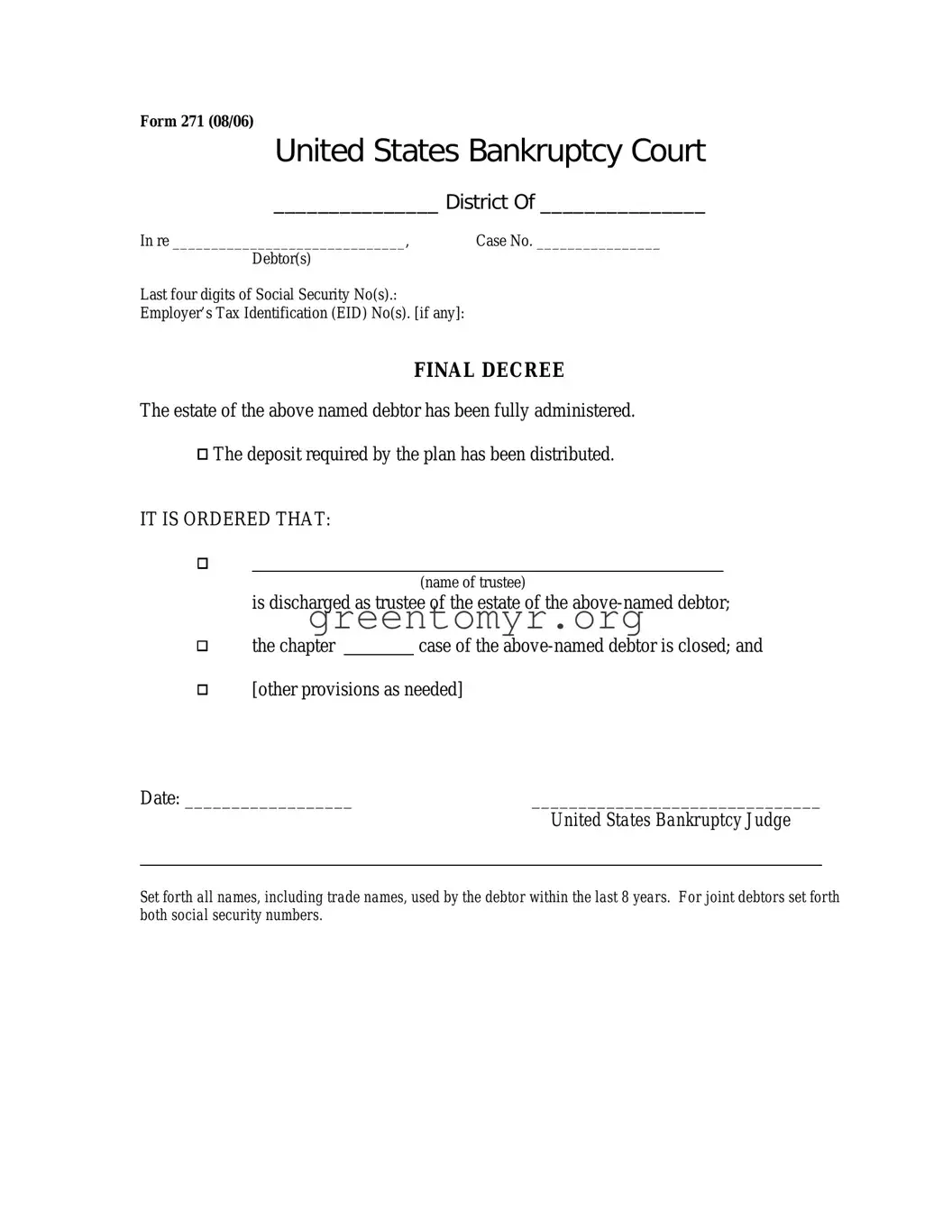The US Courts 271 form is a document used in federal courts to facilitate specific requests or communications in legal proceedings. While not all cases require this form, it serves important purposes depending on the circumstances of the case. Understanding its use is crucial for anyone involved in federal litigation.
Typically, the parties involved in a federal case may need to complete this form. This includes plaintiffs, defendants, and their legal representatives. Ensure you review court rules to determine if the 271 form applies to your situation.
The form should be submitted when a party is required to request specific actions, submit evidence, or communicate decisions to the court. Timing is critical. Filing the form at the right moment can affect case proceedings, so consult court guidelines for specific deadlines.
The US Courts 271 form can be obtained from the official website of the United States Courts or directly from the court where your case is filed. Most courts maintain resources online that include downloadable forms and instructions for completion.
Filling out the form accurately is vital. Here are steps to guide you:
-
Begin by entering case information, including the case number and title.
-
Provide detailed descriptions in the required sections. Clarity minimizes confusion.
-
Include signatures where necessary, ensuring that all parties involved understand the content.
After completing it, carefully review your work to avoid mistakes that could delay proceedings.
In most circumstances, there are no additional fees directly associated with submitting the 271 form itself. However, if the form is part of a larger motion or petition, standard filing fees may apply. Always check with the specific court for their fee schedule to be fully prepared.
Once you submit the form, it will be processed by the court. You may receive a notification confirming receipt. Depending on the content of the form, further action may be required from you or other parties involved. Stay aware of any court orders or communications that follow.
Yes, if a party disagrees with the contents or implications of the form, they may contest it. This process typically involves filing a response or objection in accordance with court rules. It's advisable to seek legal guidance if you plan to contest anything submitted via this form.
If you need help, the best options include reaching out to legal professionals or visiting self-help centers at the courthouse. There are also numerous legal aid organizations that can provide guidance. Ensuring clarity in your submission can greatly benefit your case.

